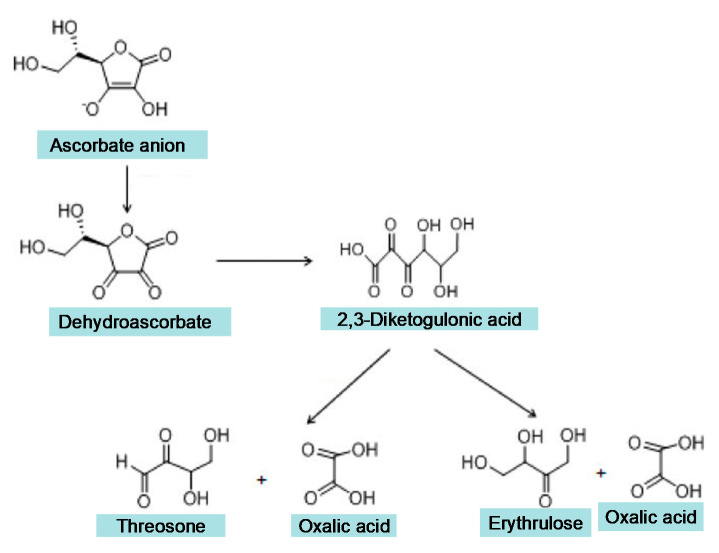Figure 4.
The non-enzymatic degradation of ascorbate to oxalate. Dehydroascorbate hydrolyses to 2,3-diketogulonic acid, which is then converted to erythrulose and oxalic acid. 2,3-Diketogulonic acid can also be converted to threosone and oxalate in the presence of hydrogen peroxide. All the degradation by-products, with the exception of dehydroascorbate, have ligands with iron and other metal binding potential. (Adapted from ref. [169]).

